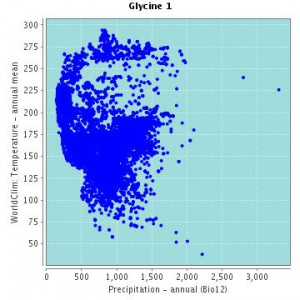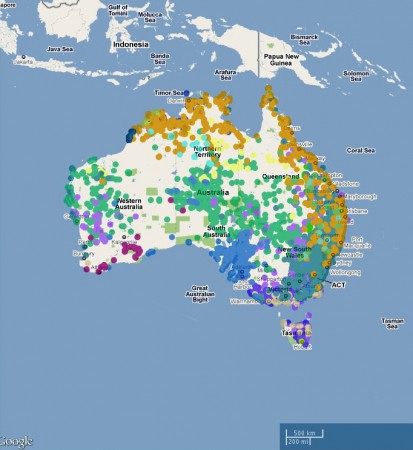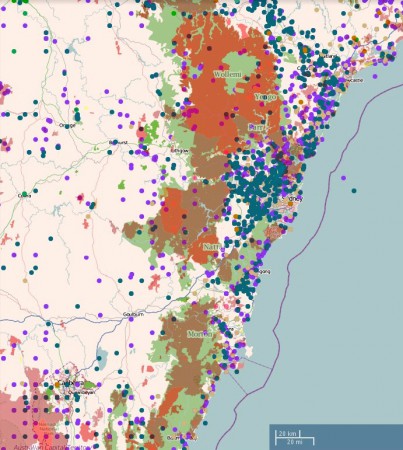I finally got around to having a go at the Atlas of Living Australia. Very nice. You can make, and download images of, pretty maps of species distributions, Glycine in this case.
And you can mash that up with lots of different environmental layers, such as protected areas, as below.
There are nifty spatial analysis tools built in, to help you predict species distributions based on climate, for example, or explore the range of adaptation of a taxon. You can contribute to the data through citizen science projects. And much more. Well worth exploring.
What you can’t do — or at least I couldn’t find a way of doing it — is export the species distribution data to a kmz for use in Google Earth. Something I’ve complained about before for other biodiversity portals. Maybe someone out there will tell us why that is. ((Ok, well, actually there’s another thing. It would be nice to be able to separate taxa by colour in the scattergrams. The one above shows the whole Glycine genus, but I’m sure the different species will cluster separately to some extent. And downloading the data doesn’t help, as for some reason taxon name didn’t come along with the environmental data. Teething problems?))
One final thing. It’s a great idea to feature a number of “themes” on the atlas website, to get people started. At the moment it is things like wattles, “iconic species” and ants. Why not crop wild relatives?


Thanks for the feedback.
We have a heap of functionality to add to the Spatial Portal. Our first priority was to be able to import and export species occurrence locations records as a CSV file (the simplest format). The export can include a host of environmental data appended. We will look into a KMZ export option. We have recently added the import and export of areas using shapefile, KML and WKT format.
Regarding colour separation of species on scatterplots, we can only do two at the moment (foreground/primary and background/secondary), but this is pretty powerful. Note the two taxa can be of any taxonomic level. If a genus or high level taxa is selected, we will consider auto-colouring the next level down. As we also support colouring the environmental envelope, it could start looking pretty complex.
Many thanks for taking the time to update us on the evolution of the portal. We’ll be keeping an eye on it, it’s a great tool, and clearly set to become even better.